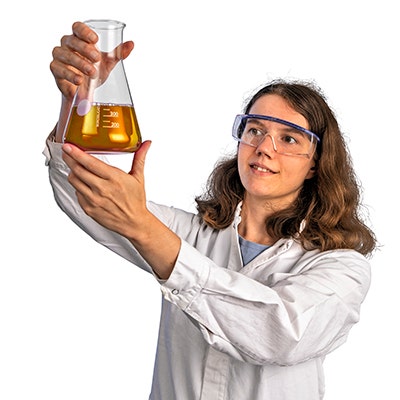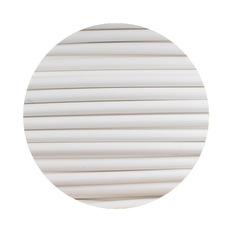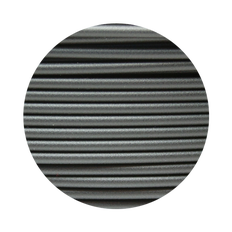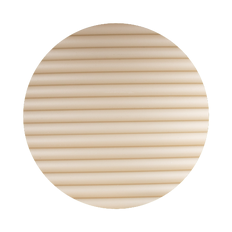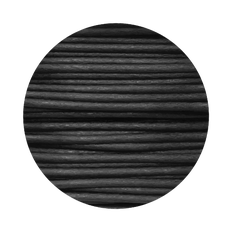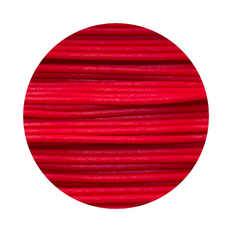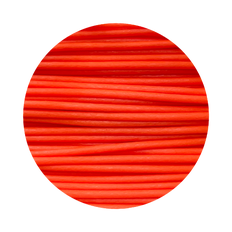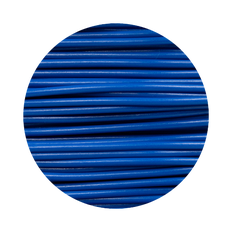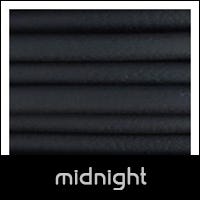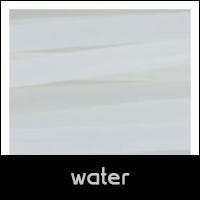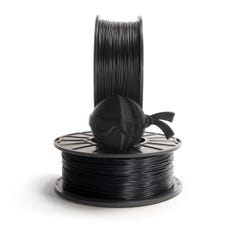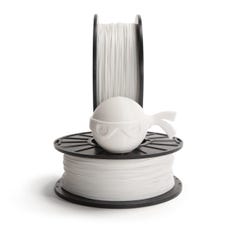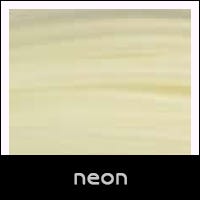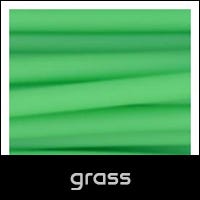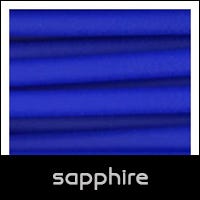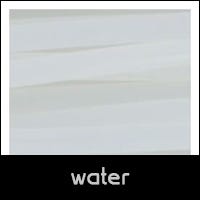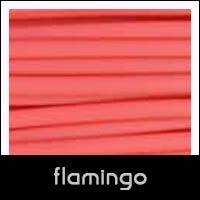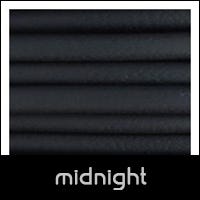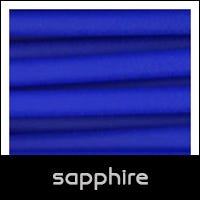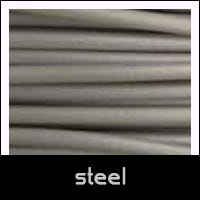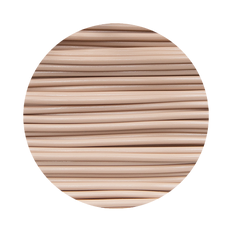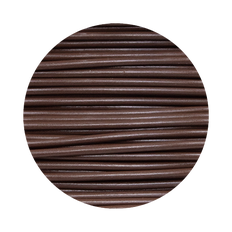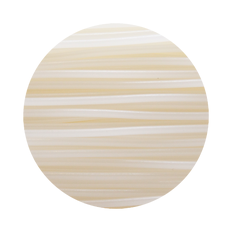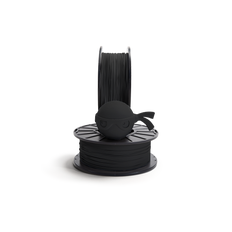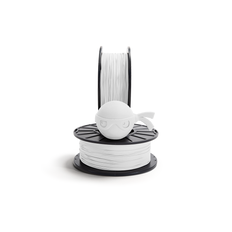Material Knowledgebase


Sharing knowledge
colorFabb is dedicated to developing innovative filaments that improve the quality of life for people around the world. Our team of engineers is dedicated to solving the toughest challenges, and we are looking for opportunities to co-develop new custom materials based on your requirements. We believe that everyone should have access to the best possible healthcare. 3D manufacturing can contribute to this goal.
What is Poly Hydroxy Alkanoate (PHA)?
Poly Hydroxy Alkanoates (PHAs) are an emerging class of biopolymers that known for their excellent biodegradability combined with good mechanical properties. The demand for PHA is growing quickly as sustainable alternatives are needed to replace fuel-based, non-degradable plastics. Although PHA has been present in nature for millions of years, industrial production of PHA has only recently emerged and become commercially available, making it the “sleeping giant” of bioplastics. Currently, about 40 manufacturers and R&D institutes are involved in the production of PHA, mostly in Asia and North America. PHA is a more sustainable option compared to PLA because of its better biodegradability (home compostable at 28 °C) and more sustainable production process (no synthesis required). Even the printing process is sustainable, as no heated print bed is required and nozzle temperatures are similar to that of PHA.
PHA is naturally present as a fat store in certain types of bacteria. Hence, industrial production of PHA relies on bioreactors where sugars and oils from renewable sources (such as corn, tapioca and sugarcane) are fermented to PHA. After extracting the PHA from the bacteria, it is ready to be used for thermoplastic applications.


The type of PHA produced depends on the type of bacteria, feed source and the fermentation conditions. We combine different types of PHA to obtain a wide scale of mechanical properties, from plastics that are hard and brittle to plastics that are flexible and soft. Our recently launched PHA filament allPHA has mechanical properties similar to fossil based plastics. It is a rigid, tough material with strong layer adhesion. Furthermore, its high Heat Deflection Temperature (HDT) makes PHA suitable for high-heat applications for which Poly Lactic Acid (PLA) cannot be used. For more details about the mechanical properties of PHA, check out our technical data sheet here.
We are always open for collaborations and custom made solutions. For more information, contact our Product Heroes Gijs and Annemiek.
Types of PHA at colorFabb
The type of PHA produced depends on the type of bacteria, feed source and the fermentation conditions. We combine different types of PHA to obtain a wide scale of mechanical properties, from plastics that are hard and brittle to plastics that are flexible and soft.
Currently, the most well-known and used types of PHA are Poly Hydroxy Butyrate (PHB) and polyhydroxybutyrate-co-valerate (PHBV). These are both polymers with short side chains, and are therefore termed short chain length PHAs (scl-PHA). PHB is a scl-PHA that is stiff, brittle and difficult to process. By incorporating hydroxyvalerate (HV) monomers, which have a slightly longer side chain, the crystallinity is reduced resulting in a more flexible and processible copolymer named polyhydroxybutyrate-co-valerate (PHBV). Although PHBV is more ductile compared to PHB, the material is still quite hard and brittle and often needs to be modified to be used for a wider range of applications.


Figure 1: Molecular structure of PHBV
PHBH is a medium chain length PHA (mcl-PHA) with longer side chains compared to PHBV. Due to its longer side chains, the crystallization behavior is different and overall crystallinity is lower, resulting in a more ductile, tough and impact resistant material. Although the mechanical properties of this PHA type are very desirable, the material warps strongly and blending with other PHA types is required.
We prepare unique blends to enhance the mechanical properties and printability of PHA while maintaining biodegradability. All of our additives used are from a natural source and are either biodegradable or can be returned to nature without any harm.


Figure 1: Molecular structure of PHBV
Printing with allPHA.
Material Information
| PLA Economy | PLA Silk | |
|---|---|---|
| Vorteile |
|
|
| Nachteile |
|
|
What platform material would be the best for using allPHA?
Our favourite after testing many different options is the carborundum coated glass plate and the combination of a Flexplate system + BuildTak type sheet. If your model has enough stiffness it allows you to release the part by flexing the plate nearly most of the time. If adhesion is too strong, we recommend heating the build plate (90 °C) to allow the material to crystallize, crystallization helps the release of the printed part from the platform.
The carborundum coated glass plate tends to release easily after printing, but hold the part firmly in place using a brim. After printing heat-up the platform (90 °C) to allow the material to crystallize, crystallization helps the release of the printed part from the platform.
If you want to print on a regular glass plate or other smooth rigid plate, then we recommend the following. For bigger parts which tend to warp more, use 3DLac to keep the part secured to the plate during printing. After printing heat-up the platform (90 °C) to allow the material to crystallize, crystallization helps the release of the printed part from the platform.
For smaller prints you can try printing without 3DLac, of course still use a brim to keep the part secure during printing.
At what temperature do I need to print allPHA?
We recommend printing allPHA with a nozzle temperature of 190-200 °C and bed temperature of set to 0 °C / ambient room temperature.
What other print settings are key to printing allPHA?
1 Fan Speed
The fan speed needs to be on full speed as soon as possible. How soon you can activate 100% cooling fan may depend on your printer, but in general the sooner the better. We want to remove heat from the material as soon as possible to stop crystallization process.
2 Brim
We recommend using a brim for better adhesion of corners which might lift due to internal shrinkage. We generally use 20 perimeter for a brim.
3 Retraction settings
On most 3D printers the retraction settings can be set a bit lower than you would for PLA. If you see small gaps in the outside surface of the print it might be a sign the retract values are set just a bit too high.
Is drying required before printing with allPHA?
allPHA is made from the fat cells of bacteria and does not attract much water. Therefore, drying allPHA before printing is not necessary
Material properties of PHA
Is allPHA UV resistant?
UV light can have an ageing effect on allPHA over time. The printed part may look different or become more brittle. We expect allPHA Black and allPHA White to be more resistant to UV than allPHA Natural.
Is allPHA resistant to high temperatures?
allPHA has a high heat deflection temperature (HDT) of 153 °C. Above this temperature, printed parts may lose their shape. allPHA is much more temperature resistant compared to PLA, which generally has a HDT of 55 – 60 °C.
What is a good solvent for allPHA?
allPHA does not dissolve in solvents commonly used for 3D printed parts, such as acetone or D-limonene. Halogenated solvents, such as chloroform, are best for dissolving PHA. However, these solvents are not recommended due to their harmful nature.
Is allPHA biocompatible?
allPHA has good biocompatibility and can be used for medical devices which require skin contact, such as orthopedic devices and prosthetics.


Biodegradability and sustainability of allPHA
PLA is also biodegradable. What is the difference?
PLA only breaks down in industrial composting facilities at temperatures close to 60 °C. Our allPHA breaks down in soil, backyard compost piles, and even in the sea, without leaving microplastics.
Does the biodegradability of allPHA influence its shelf life?
allPHA needs an environment that is moist and rich in bacteria to be biodegraded, such as soil or compost. It will not break down in a dry, clean environment.
How is PHA produced?
The main resource for PHA is sugars from plants like corn and sugarcane. Bacteria convert these resources to PHA to use as a fat reserve. PHA can be extracted and used for thermoplastic applications, such as filaments. No chemical synthesis is involved in this process.
Why do we need biodegradation if we can recycle?
Recycling often leads to a loss of quality due to the high temperatures at which it is performed. That is why not all materials can be recycled. Another problem is that plastic materials are not always collected to be recycled, but sometimes end up in landfill or in oceans. We made sure that allPHA degrades without harming the environment when this happens.
Does allPHA contain harmful additives or microplastics?
allPHA is 100% biodegradable and does not leave microplastics or other harmful substances. The additives in our PHA filaments are either biodegradable and non-toxic, or natural inorganic minerals which can be returned to nature without any harm.
Is there any methane released into the environment upon biodegradation?
In aerobic conditions (with oxygen present), no methane is released. Instead, allPHA breaks down to water and CO2. This process is emission neutral, because the plants used for the production of PHA take up CO2 from the environment to grow.
Is the production of allPHA carbon neutral?
Contrarily to fossil-based plastics, the resources of allPHA are 100% renewable. Plants take up CO2 from the atmosphere which is stored in allPHA and released again upon biodegradation. However, heat is used in processing allPHA and in the printing process. Hence, the overall production process is not carbon neutral. As allPHA is best printed on a cold bed, less energy is required for printing compared to materials such as PLA and ABS.
Applications of allPHA
Aerospace and automotive engineering
Since the beginning days of 3D printing, rapid prototyping has been an important and widely used application due to its low cost, time efficiency and freedom of design. PHA is a sustainable alternative to fossil-based plastics for the production of automotive parts. The silky look of PHA allows for stylish interior design and its high resistance to heat deformation makes PHA a good candidate even for under the hood parts.
Design
As consumers become more aware of their effect on climate change, their demand for sustainable alternatives rises. allPHA has a unique, silky touch and shows fine details beautifully. This makes the material perfect for design applications such as lamps, wall hangings and decorative items. allPHA is also a very suitable material for producing molds. It’s high heat resistance (up to 150 °C) allows for even for heated fluids, such as candlewax and soap, to be molded.
Outdoors applications
allPHA is also perfect for products that are used outdoors, such as frames for sunglasses, frisbees or tent pegs. allPHA breaks down in any natural environment, including the ocean. Hence, allPHA is the perfect solution for aquatic applications such as non-durable fishing products, water sports and on-board applications for ships.
Shoe lasts
Shoe lasts are essential for the craft of shoemaking. Customized shoe trees are easily and rapidly produced on demand using 3D printing. This makes it possible to realize the perfect fit for each customer. After finishing a new, custom designed pair of shoes, the shoe trees can be disposed of guilt-free.
Our allPHA filaments
What is Thermoplastic Polyurethane (TPU)?
Thermoplastic polyurethanes (abbreviated as TPU) are elastomers characterized by high resistance and flexibility, combining the main properties of elastomers and thermoplastics. This group of materials has the mechanical properties of elastomers, but the melting behavior of a thermoplastic, thus a thermoplastic elastomer.
Elastomers are materials that display elastic behavior due to the presence of crosslinks. These crosslinks are often covalent bonds that restrict polymer chains from flowing past each other. Upon stretching, the polymer chains will stretch out until restricted by the crosslinks. Upon releasing stress, the polymer chains will tend to coil up and regain their un-stretched shape. Covalently crosslinked rubbers, such as rubber bands and car tires, cannot be melted due to the restricted polymer chains.
TPU is a rubber-like block copolymer consisting of hard and soft polyurethane segments. The hard segments form crystalline domains, while the soft segments remain disordered. TPU is soft and flexible due to its soft, amorphous regions. The hard, crystalline regions, on the other hand, act as physical crosslinks, resulting in elastic behavior similar to that of a rubber. However, due to melting of the crystalline domains, a TPU can still be processed through melt extrusion and 3D printing, while this is not possible with conventional, covalently crosslinked rubbers.


Schematic of an elastomer before and after stretching.
Types of TPU at colorFabb
Each TPU filament offers basically the same properties good elasticity and flexibility, easy printing, high quality and high dimensional accuracy.
TPU varioShore’s foaming technology makes it possible to tune the shore value of your printed part by changing the printing temperature. At a printing temperature of 190 °C, TPU varioShore is in its non-foamed state with a shore hardness of 92A and a density of 1,22 g/cm3. Around 230 °C, the material reaches maximum foaming with a density of 0.7 – 0.9 and a lower shore hardness. TPU varioShore is the best choice for applications where low density and softness are essential, such as shoe insoles, prosthetics and cosplay.
PHBH is a medium chain length PHA (mcl-PHA) with longer side chains compared to PHBV. Due to its longer side chains, the crystallization behavior is different and overall crystallinity is lower, resulting in a more ductile, tough and impact resistant material. Although the mechanical properties of this PHA type are very desirable, the material warps strongly and blending with other PHA types is required.
We prepare unique blends to enhance the mechanical properties and printability of PHA while maintaining biodegradability. All of our additives used are from a natural source and are either biodegradable or can be returned to nature without any harm.
PHBH is a medium chain length PHA (mcl-PHA) with longer side chains compared to PHBV. Due to its longer side chains, the crystallization behavior is different and overall crystallinity is lower, resulting in a more ductile, tough and impact resistant material. Although the mechanical properties of this PHA type are very desirable, the material warps strongly and blending with other PHA types is required.
We prepare unique blends to enhance the mechanical properties and printability of PHA while maintaining biodegradability. All of our additives used are from a natural source and are either biodegradable or can be returned to nature without any harm.
PHBH is a medium chain length PHA (mcl-PHA) with longer side chains compared to PHBV. Due to its longer side chains, the crystallization behavior is different and overall crystallinity is lower, resulting in a more ductile, tough and impact resistant material. Although the mechanical properties of this PHA type are very desirable, the material warps strongly and blending with other PHA types is required.
We prepare unique blends to enhance the mechanical properties and printability of PHA while maintaining biodegradability. All of our additives used are from a natural source and are either biodegradable or can be returned to nature without any harm.
Filament is NinjaTek’s first truly conductive and flexible filament. Suggested applications: electronic traces, Integrated flexible wire, anti static grippers, conductive wearable.
Filament is NinjaTek’s first truly conductive and flexible filament. Suggested applications: electronic traces, Integrated flexible wire, anti static grippers, conductive wearable.
Material properties of TPU
Is TPU a strong material?
TPU is generally considered a strong material. TPU varioShore, for example, has a tensile strength of 58,6 MPa. Due to its strong layer adhesion, printed parts of TPU are also very strong.
Does TPU have a good chemical resistance?
TPU has a great chemical resistance, especially against oily and greasy substances.
What does the shore value say about a material?
The shore value is a measure of hardness of the TPU type. A lower shore value TPU is softer and often more flexible compared to a high shore value TPU. The shore value is often a number followed by A, for example “92A”.


Applications of TPU
Footwear
TPU is already a commonly used material for footwear. VarioShore TPU is the ideal material for additive manufacturing of footwear applications because of its elastic properties and low-weight foaming technology. Its strong layer adhesion and high resistance to abrasion and tearing makes it suitable for both the interior and exterior of the shoe.
Orthopedic insoles
Conventional production techniques of orthopedic insoles, such as milling, are often wasteful and time consuming. 3D printing is a cost-effective, quick and low-waste solution to produce durable insoles with a perfect fit. Our unique foaming technology allows for printing of a lightweight sole with a soft, comfortable feel in the shoe. Sole Premium TPU is specially developed for PodoPrinter, which offers a full solution for the 3D printing of insoles.
Prosthetics
In developing countries, amputations are common due to wars and diseases. However, prosthetics are often expensive or even unpayable for someone with little income. VarioShore Prosthetics offers a solution for cost-effective 3D printing of lightweight and comfortable prosthetics. The foaming contributes to a cushioning effect and the biocompatibility of TPU makes it comfortable to wear directly on skin for a prolonged period of time.
Engineering
TPU is known for its high tensile strength and great abrasion and tear resistance. Its excellent layer adhesion allows for the production of durable parts. This makes TPU perfect for rapid manufacturing and low-scale production of flexible engineering applications, such as tubing and hoses. TPU also has great resistance to oily substances, making it an ideal material for seals and gaskets.
Cosplay
TPU VarioShore is a great choice for cosplay projects. TPU VarioShore is available in a range of bright colors that become softer with more foaming. By controlling the temperature, parts can be printed in the desired shade. TPU VarioShore cosplay parts are comfortable to wear because of the low density and soft feel.
Printing with TPU
What temperatures do I need to print TPU varioShore?
TPU varioShore prints well between 190 and 250 °C. The level of foaming increases with temperature, starting out non-foamed at 190 °C and reaching maximum foaming at 230 °C.
How do I get low density parts?
The largest density reduction can be obtained when printing at 230 °C. The foaming process will increase the volume of the printed material. To prevent over extrusion, it is recommended to set the flow to 60 – 70%. This will lead to a part with a density of 0.7 – 0.9 g/cm3.
Does print speed influence foaming?
The print speed can influence the level of foaming due to the residence time in the nozzle. A slower print speed will result in a longer residence time of the material in the nozzle, allowing for a better transmission of heat to the material. Hence, a slower printing speed may result in more foaming.
Is it safe to print with TPU?
TPU does not release toxic fumes while printing. Furthermore, TPU is has good biocompatibility and is safe to wear directly on skin and is often used for wearable applications.
Our TPU filaments
MEET OUR PRODUCT HERO ANNEMIEK!
Annemiek knows all about our materials and material development.
colorFabb is dedicated to developing innovative filaments that improve the quality of life for people around the world. Our team of engineers is dedicated to solving the toughest challenges, and we are looking for opportunities to co-develop new custom materials based on your requirements.
Want to know more about our poducts and how they are made, contact Annemiek via the contactform below!
